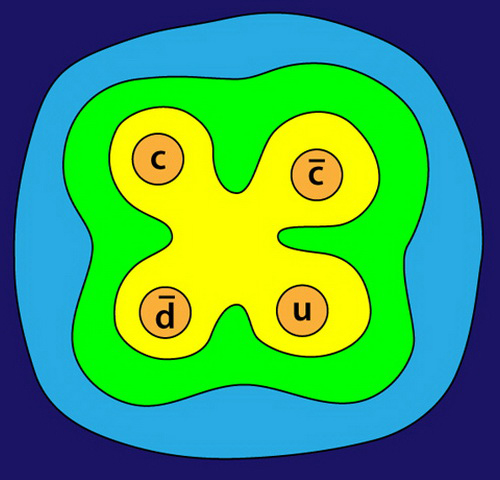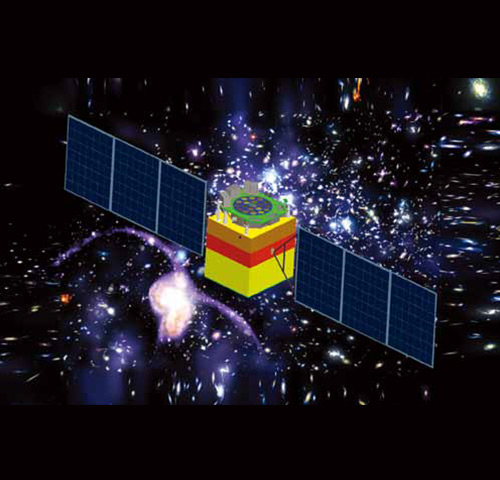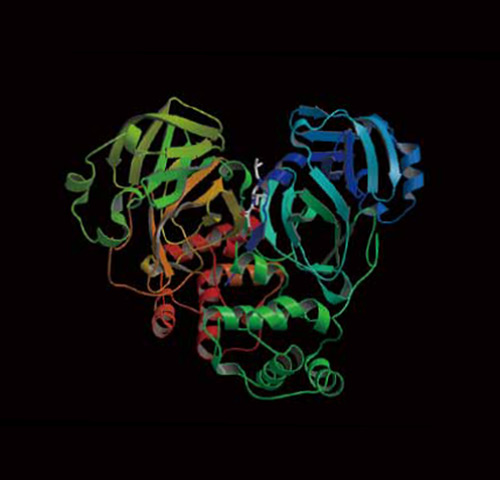-

-
Accelerator Technology and Science
Particle accelerators are key facilities for high energy physics experiments and multi-disciplinary research. They are also strategically significant for the national economy and public health, for example in particle therapy for cancer treatment.IHEP has expertise in both electron and proton accelerators. The Accelerator Division successfully developed, built and ran the Beijing Electron-Positron Collider (BEPC) and its upgrade BEPCII, which is still running. Research and development for the China Spallation Neutron Source (CSNS), a high-power, high-intensity proton accelerator, is currently ongoing, with IHEP responsible for the radio-frequency quadrupoles ...
-

-
Particle Physics
Particle physics looks at the most fundamental structure of the universe – the particles that are its most basic building blocks, and the ways they interact with each other. Particle physics theorists try to understand how and why it all works, using mathematics and results from experiments to develop theories. Particle physics experiments test the theories and look for unexpected new results that can tell us more of the secrets of the universe. Particle physics at IHEP includes both theoretical and experimental research. There are two types of particle physics experiment – those that use particle accelerators, and those that don’t. Accelerator-based exper...
-

-
Astroparticle Physics
Particle physics plays an important role in understanding how stars, galaxies and other astrophysical objects work, and in studying the origin and evolution of the universe. Astrophysics and cosmology also pose great challenges for particle physics. The intersection between these fields is known as astroparticle physics (or particle astrophysics). IHEP is the biggest research base for astroparticle physics in China, focusing on cosmic rays, neutrino physics, astrophysics, space-based experiments, and underground experiments.For cosmic ray experiments, the Yangbajing Cosmic Ray Observatory, in Tibet, is one of the four largest international ultra-high energy ...
-

-
Multi-Disciplinary Research
With ready access to advanced accelerator and nuclear analysis technologies, IHEP is an important resource for studies in fields including condensed-matter physics, chemistry, life science, materials science, nano-science and environmental science.The Beijing Synchrotron Radiation Facility (BSRF) has 5 insertion devices and 14 beamlines with experimental stations. Its research fields cover physics, chemistry, biology, environmental science and medicine. About 300-400 experiments are carried out each year by nearly 100 national research institutions. Interesting studies in fields including protein crystallography, nano-materials, X-ray phase contrast imaging, ...
-

-
Computing
Research, development and operation of scientific computing facilities is essential to accomplish IHEP’s mission. IHEP has been an early adopter of new computing technologies, ever since hosting the first Internet node in China, BEPC2.IHEP.CERN.CH, on a VAX785 at IHEP in 1988. Our computing research continues to develop the frontiers of networking, high performance computing, grid and cloud computing, and high performance storage. IHEP’s computing environment provides a data-intensive computing platform with high performance computing and data storage of 10 PB, with 160 Gbps backbone bandwidth for the institute’s intranet and 20 Gbps bandwidth for external...
-

-
Technology Transfer
Constructing large-scale science facilities and working across the boundaries between different fields naturally leads to the development of many new technologies. IHEP actively encourages the development of spin-off technologies which can benefit society. These have included PEMi and SPEMI scanners for breast imaging, micro SPECT/CT scanners and micro PET/CT scanners, electron accelerators for industrial radiation processing, medical accelerators, accelerator-based ray sources, three-dimensional microscope CT scanners, high energy industrial CT scanners, superconducting magnetic separation devices, and gamma ray imaging devices.